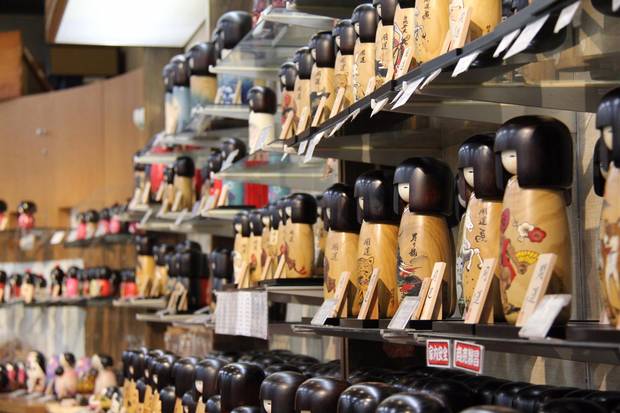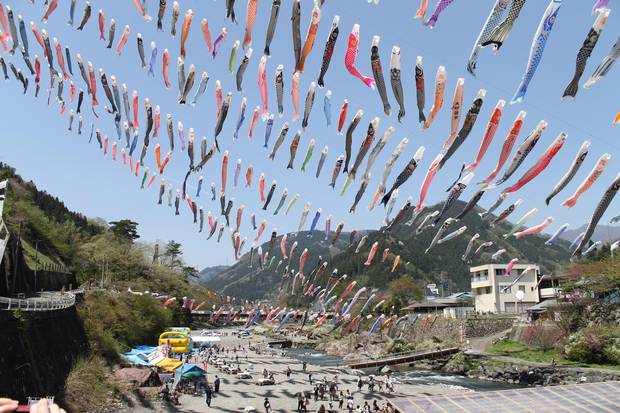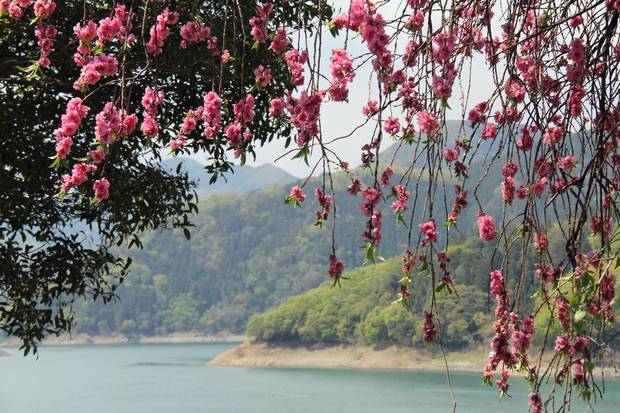Japan's Gunma Prefecture – off the beaten path – stands out as one of the country's best-kept travel secrets, offering no shortage of activities for those looking to escape the usual tourist circuit.
Renowned for its hot springs, Gunma is a centre of traditional cultural pursuits and is host to a wide range of year-round outdoor adventures.
Located approximately 100 kilometres northwest of Tokyo, direct trains to the prefecture's largest city – the centrally located Takasaki – are available from major stations in the capital on the Takasaki and Shonan-Shinjuku Lines, making Gunma an excellent weekend escape as part of any Japan tour itinerary. With no transfers to worry about, one is free to sit back and enjoy as the passing scenery transitions from glittering metropolis, to sleepy suburbs and finally to mountain-ringed, wide-open spaces.
Explore culture in the central region
Overshadowed by historic Kyoto, Gunma Prefecture is an unexpected centre of Japanese culture. The central region – encompassing Takasaki and the prefectural capital of Maebashi – are steeped in traditional Japanese culture and history.
Daruma
Daruma – the famed red papier-mâché good-luck symbol of Japanese Buddhism – originated at the Edo-era Shorinzan-Darumaji temple in Takasaki. Indeed, 80 per cent of Daruma dolls sold in Japan today are still produced in the traditional craft shops of Takasaki. Located a short walk from Gunma-Yawata Station, Shorinzan-Darumaji, which dates back to the late 1600s, still offers all manner of Daruma for visitors.
The temple sits in the shadow of Byakue Dai-Kannon – a towering 41-metre statue dedicated to Kannon, the Buddhist goddess of mercy. The hollow structure sits on a mountainside and offers sweeping views of the prefecture for those climbing to the observation points within the 6,000-tonne structure.
Kokeshi

Traditional Japanese wooden dolls line the shelves at the Usaburo.
Bob-haired wooden kokeshi dolls are a mainstay of Japanese culture, and the finest handmade examples hail from the Usaburo Kokeshi workshop located in the mountains of northern Maebashi. A third-generation, family-run outfit, Usaburo Kokeshi craftsmen and women still hand-make the limbless, intricately carved dolls and are Japan's largest maker of sosaku-style kokeshi.
A short taxi ride away from Yagihara Station – just ask the driver for Usaburo Kokeshi – the complex provides a full afternoon of activity. A self-guided tour of the workshop shows the process of turning raw cuts of locally sourced dogwood, cherry trees and chestnut into an ornate, highly-polished final product.
An adjacent museum showcases the hundreds of award-winning kokeshi crafted by the shop's founder, Usaburo Okamoto, dating back to the 1950s.
In the shop's gallery, do-it-yourself kokeshi seminars are available for both adults and children. Hundreds of dolls, as well as other handcrafted items, are for sale in a variety of designs and sizes. A typical doll – about six inches tall – starts at around $17, although larger and pricier options certainly exist.
Escape to nature in southern Gunma
With its small, far-flung mountain villages, the southern region of Gunma is appropriately known as the "Nepal of Japan."
While only about an hour away from Takasaki, the rugged south of the prefecture feels like another world frozen in time, and is home to plentiful scenic mountain beauty and outdoor activities.
Kanna-machi

Kanna-machi comes to life every spring with the koinobori festival, featuring hundreds of giant carp streamers.
The sleepy town of Kanna-machi – Japan's second-oldest town in terms of demographics – has leveraged its considerable natural beauty into a burgeoning tourist industry. Each spring, the town hosts the koinobori festival along the banks of the river bisecting it. A staple of the country's late April raft of national holidays known as Golden Week, Kanna's koinobori festival is known across Japan for the 800 giant carp streamers hung from the mountain near the town centre.
In summer and into the fall, the town also operates a riverside beer garden and campsite. Surrounded by steep mountains and far from the overpowering lights of Tokyo, setting up camp in Kanna allows for excellent stargazing.
The pristine mountain road leading into town also features one of Japan's newest "melody roads" – a stretch of asphalt with precisely milled grooves that, when driven over, produce vibrations in one's car to the tune of traditional Japanese music.
Ueno-mura
Further to the south of Kanna is Ueno-mura. Despite this village's small size, Ueno has no shortage of outdoor activities.
The Sky Bridge – a mountain span suspended some 90 metres above the valley below – provides a scenic sweep of the surrounding mountains. Past the Sky Bridge lays a vast cave complex for exploring ($8 admission). Steeped in local lore, the caves present a unique slice of cultural history dating back 400 years.
Nearby, the new Forest Adventure company features ziplines, slides and other woodland activities for all age groups ($30 a adult).
Embrace winter in the north
Gunma is not just a destination for warm-weather fun, and the northern region of the prefecture makes an excellent destination for those visiting during the colder months.
Hot springs
The 400-plus hot springs of Gunma are held in particularly high regard in Japan. Mineral-rich and relaxing, the prefecture's many onsen for centuries have been a draw for their reputed curative properties.
Kusatsu is the best known of Gunma's hot springs. The resort town features hundreds of hot springs with multiple options available. Most hot springs and hotels are clustered around the Yubatake – the source of Kusatsu's hot spring water. Family-friendly public baths are open for those looking for a quick soak after a day of sightseeing, while traditional ryokan hotels offer onsite hot springs for those seeking an overnight stay.
Elsewhere, the hot springs of Ikaho, located about 45 minutes from Takasaki, provide a less-crowded alternative.
Skiing
Living in the shadow of its more famous neighbour Nagano, Gunma Prefecture's northern region nonetheless has no shortage of top-notch skiing and snowboarding.
With its fortuitous placement on the Japanese main island, the mountains of northern Gunma lend themselves to low-moisture snowfall, making for high-quality ski outings at more than 20 resorts in the prefecture.
The Kusatsu International Snow and Spa Resort provides nine ski and snowboard courses for all skill types. Further north, the Fujiwara Ski Resort in Minakami offers 10 slopes and features an onsite hot spring perfect for an après-ski dip.
Where to stay
Modern
The Washington Plaza Hotel adjacent to Takasaki Station offers a comfortable, centrally located home base for those taking day trips to the north or south. Rates from $50 a night; washington.jp/takasaki/en
Toyoko Inn, also located in the Takasaki city centre, has affordable rooms well-suited for both families and individual travellers. Rooms start at $65 a night, and include a free continental breakfast; toyoko-inn.com/eng
Traditional
For a more intimate Japanese experience, consider a stay in one of Gunma's many traditional ryokan hotels. Featuring onsite hot springs and often family-run, ryokan offer a communal bed-and-breakfast feel, and include meals featuring local specialties. While generally pricier than modern hotels, ryokan provide visitors with a unique slice of traditional Japanese culture; kusatsu-accommodations.jp
